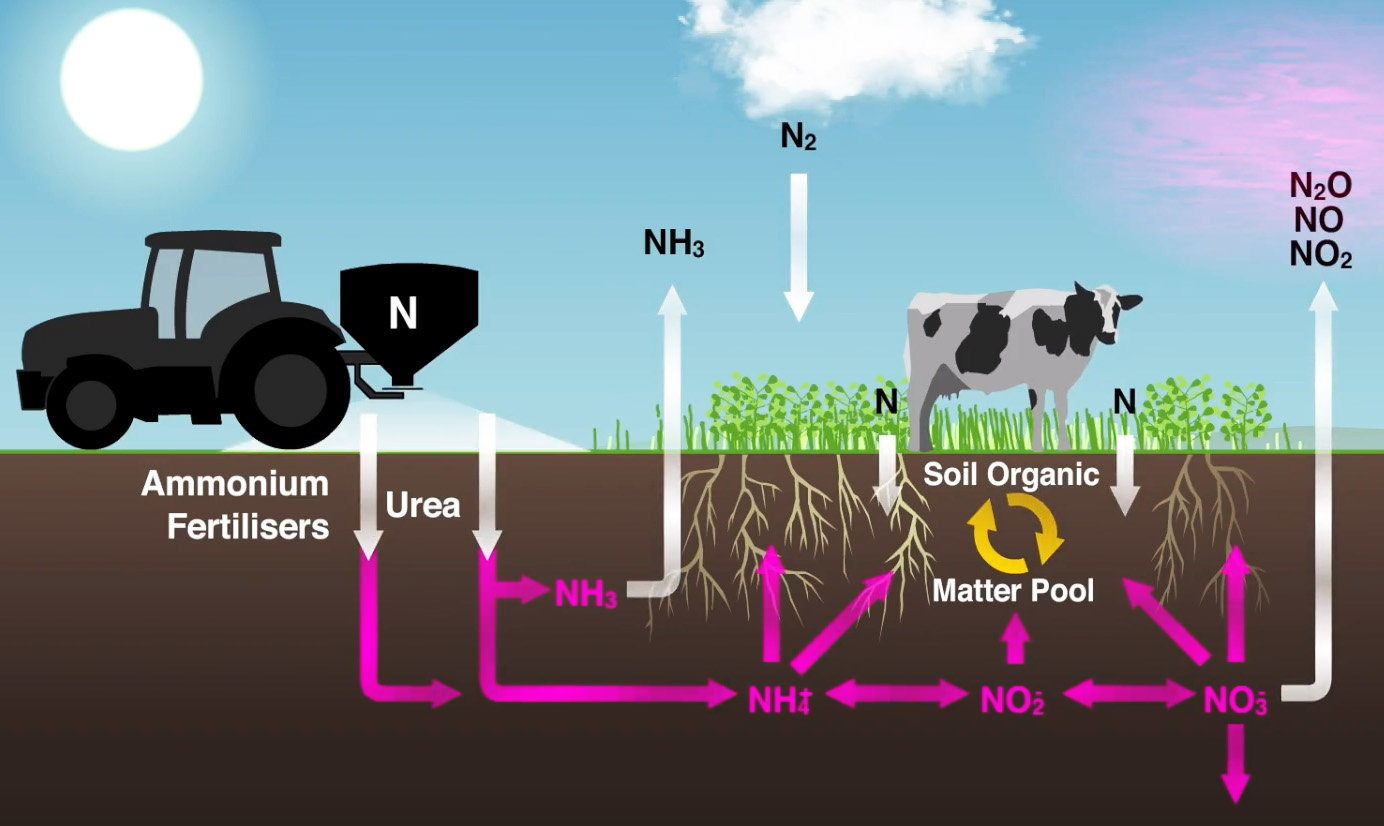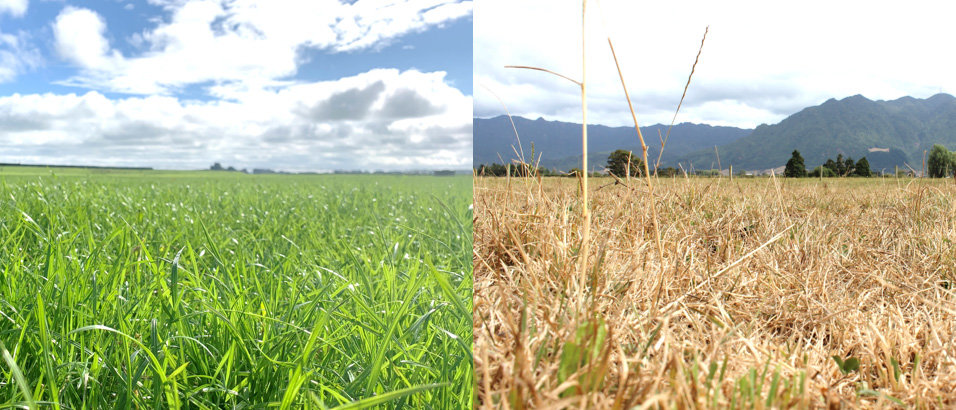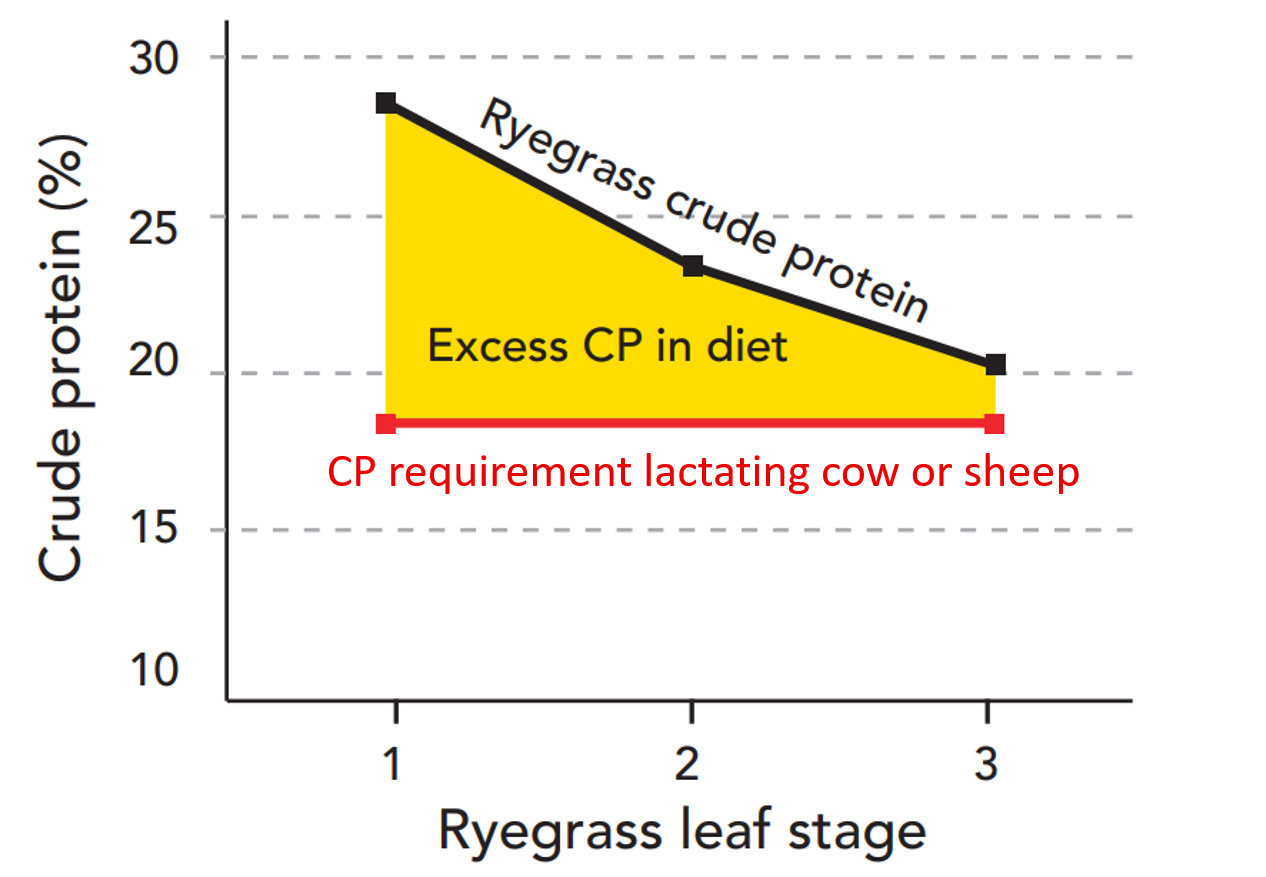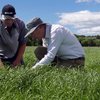

And pay credit to a life giving gas!
Every day a phenomenal chemical process takes place on your farm...
Every day a phenomenal chemical process takes place on your farm, one that began millions of years ago.
Earth’s most abundant atmospheric gas cycles endlessly through your animals, your land and your air to sustain life as we know it. We literally cannot live without nitrogen. But neither can we live with too much of it, especially when it ends up in the wrong place.
Happily, between these two extremes lies a happy middle ground, where pastures, animals, people and the environment prosper. Getting there might seem a big ask at times! But new solutions to help you along the way are being developed right now.
Meantime, let’s give nitrogen the credit it deserves for nourishing us all, in more ways than one. This is the first of two Insights about nitrogen; next month we’ll look at how it relates to our plant breeding programme.
Putting the n in protein
If nitrogen suddenly disappeared out of the world, there would be no protein. Also our lungs would be 80% empty because most of what we breathe is not actually oxygen. But that’s another story…
Nitrogen puts the protein in pasture, milk, meat, muscle, and fibre. It is essential for all living things, including our farm systems.
And because no other nutrient more commonly limits pasture growth and animal production, we routinely apply it as fertiliser. In doing so, however, we often alter an intricate web of chemical and biological interactions.
What goes round, comes round
You know what they say: A picture of the nitrogen cycle on your farm is better than 1000 words describing it! So here’s a diagram showing how it works.

In short – it’s complex. What matters most is keeping the cycle balanced, so that as much nitrogen as possible is put to good work making usable protein, and little is wasted.
Think of it like fuel efficiency – you want to get great mileage out of all the nitrogen constantly circulating through your farm system, whether it’s in the air, the soil, your pasture or your animals.
Green me up
The amount of nitrogen in pasture and forage is usually calculated in terms of crude protein.
So far, so simple, right? The tricky part is that these crude protein levels are highly dynamic.
They fluctuate constantly throughout the year, depending on what you’re growing, how old it is and what the weather’s doing. A good rule of thumb is that anything green and leafy is high in crude protein.
Premium leafy green ryegrass in early spring, for example, may contain 22-24% crude protein. Leafy clover usually contains 22-30%. Ever-green chicory averages +25%.
But yellow, dry ryegrass in a drought in February might only have 12-14% crude protein. Sub-tropical grasses like paspalum and kikuyu may have less than 15% in mid-summer.

How much is enough?
Just like us, animals’ need for protein varies depending on their age, energy output and expected performance.
A lactating dairy cow or ewe, for example, needs 18% crude protein in her daily diet. At the other end of the spectrum, dry stock on maintenance need to consume about 12%, and in between, young, actively growing animals need about 14%.
Giving your animals the right amount of protein at the right time makes them very efficient at converting the nitrogen in their feed into healthy growth and saleable product.
Without enough crude protein in their diet, animals cannot produce milk or meat, no matter how much metabolisable energy you offer them. So if nitrogen is missing from their pasture or forage crop, production is compromised, and your system becomes less efficient.
Fixation and other fixes
One great way to support your farm with sustainable, natural nitrogen is to grow more clover. You’ll get free nitrogen fertiliser from clover’s ability to fix nitrogen out of the atmosphere, and your animals will thrive.
You can also get more out of your nitrogen fertiliser applications by aligning these to the times when plants are most responsive.
Actively growing grass and crops convert nitrogen into protein-rich grazing much faster and more efficiently than those that are too cold, wet, hot, dry or otherwise stressed.
In a rotational grazing system, another way to use your nitrogen fertiliser more efficiently is to lengthen the time between application and grazing, from 2.5 leaves to 3 leaves per tiller. This doesn’t sound much, but it can make a big difference, because it dilutes the amount of nitrogen present in each leaf, giving you more feed for the same amount of fertiliser.

efficiencyand reduce nitrogen leaching.
Coming soon
Looking ahead, one of our goals as plant breeders is to develop new pastures that use nitrogen more efficiently, so you can grow the same amount of feed with a lighter footprint.
The first of our new grasses bred for increased performance under low nitrogen inputs will be available early next year, so stay tuned! We’ll talk more about that next month.
For now, remember we’re always available to help with free advice about getting the best out of your pasture and forage. Just hop online to book your personal Pasture Health Check today at www.barenbrug.co.nz




